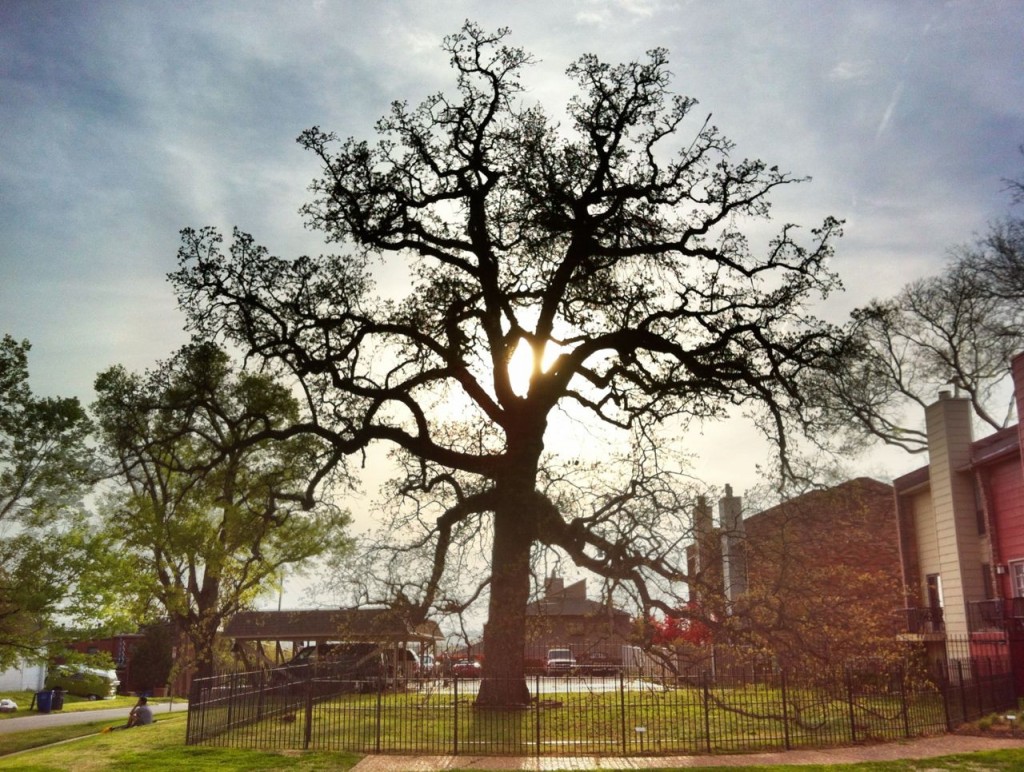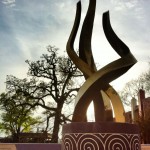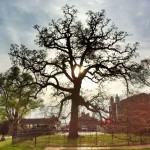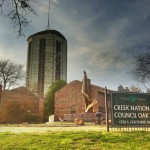I have a thing for monuments, which is the theme for this week’s photo challenge from dailypost.wordpress.com.
It must go along with my interest in history. It makes sense to me that people create or designate monuments so that future generations will remember something that our predecessors found important or meaningful.
That is why I have chosen the tree pictured above. Known as the “Creek Council Oak,” it not only symbolizes what could be called the beginning point of my city, but it also remembers a people’s struggle for survival and their hope for the future; and, it honors their culture in a public and substantial way.
Sitting atop a hill overlooking a bend in the Arkansas River, now in the outskirts of Tulsa’s downtown district, the monument is described like this:
The Creek Council Tree, a mature burr oak, marks the traditional “busk ground” chosen in 1836 by the Lochapoka clan of Creek Indians. In late 1834, they had begun their involuntary migration from Alabama under the control of the U.S. Government.
It was a slow and painful trek; of the original group of 630, 161 died in route. Their 1836 arrival was marked with a solemn and traditional ceremony. A “busk” site was chosen on a low hill overlooking the Arkansas River. Here, according to their traditions, they deposited ashes brought over the trail from their last fires in Alabama. […]
The oak, standing in its small, well-landscaped city park, serves as a meaningful memorial to the proud Indian tribe that brought law and order to a new homeland nearly 156 years ago. The Creek Council Tree was placed under Historic Preservation Zoning in January of 1992. (Tulsa Preservation Commission)
Marking an end to their trials on the Trail of Tears, and serving as a starting point for all that the Creeks and other tribes have accomplished for their people since the forced removal from their ancestral homes, this monument is mostly overlooked by most people today.
I thought it would be nice to record it here with an encouragement to take note of other monuments, large and small, when you encounter them. Try to remember the motives that our predecessors had in placing them for us to consider and seek to learn something from their experiences.



